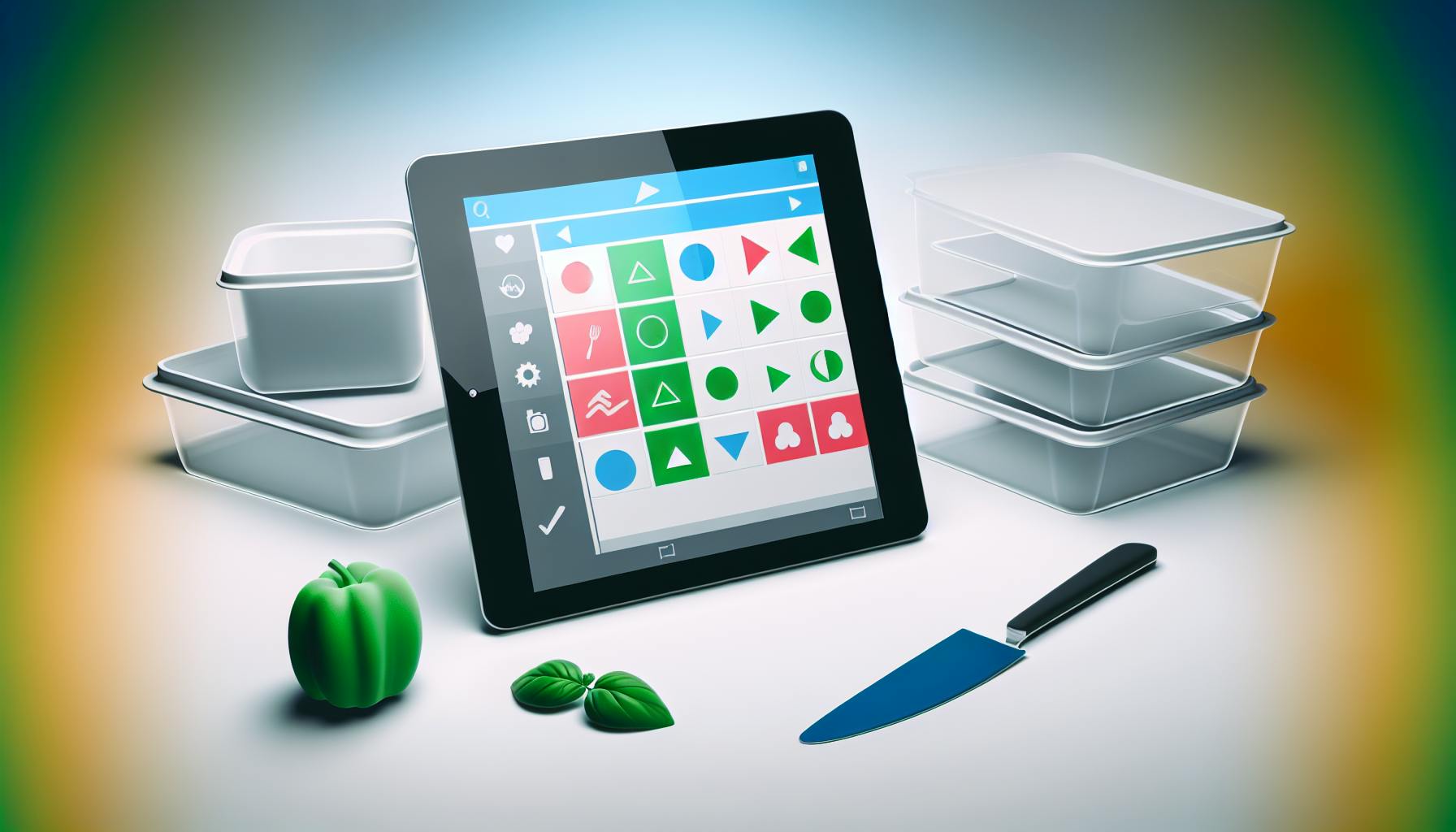To ensure a successful CRM implementation, follow these 10 steps:
-
Understand Team Needs and Pick CRM Software
- Gather input from department heads on their requirements
- Assess employees' current CRM skills and experience
-
Create Custom Training Programs
- Develop role-specific learning plans
- Use real-life examples from the meal prep service industry
-
Allow Hands-On Practice in 'Sandboxes'
- Provide a risk-free environment with simulated data
- Progress from basic to advanced CRM features
-
Promote Continuous Learning
- Create a learning library with guides and best practices
- Support professional development and CRM certifications
-
Set Up Internal Support and CRM Champions
- Train knowledgeable CRM champions to support users
- Communicate clear support channels
-
Set Standard CRM Procedures and Data Rules
- Establish guidelines for data entry and management
- Manage system maintenance, permissions, and backups
-
Evaluate Training and CRM Adoption
- Collect feedback from trainees
- Measure user adoption with analytics
-
Provide Ongoing Support and System Updates
- Set up a helpdesk for ongoing issues
- Implement CRM updates and new features
-
Encourage User Feedback and Improve Onboarding
- Create feedback channels for employees
- Adjust onboarding based on analytics
-
Focus on Key Points for Effective CRM Onboarding
- Structured training tailored to roles
- Ongoing learning and system enhancements
- Feedback and analytics for improvement
- Support resources for employees
By following these steps, meal prep service businesses can ensure a smooth CRM onboarding process, driving user adoption, productivity, and business success.
Step 1: Understand Team Needs and Pick CRM Software
Choosing the right CRM software is vital for a successful implementation and onboarding process. To ensure a smooth transition, you need to understand the specific needs and roles of your team members.
Get Input from Department Heads
Involve department heads from various teams, such as sales, marketing, customer service, and operations, to gather their input on the CRM selection process. Each department may have unique requirements and processes that need to be accommodated within the CRM system.
| Department | Requirements |
|---|---|
| Sales | Lead management, pipeline tracking |
| Marketing | Campaign management, automation capabilities |
| Customer Service | Ticketing system, case management tools |
| Operations | Inventory management, reporting features |
Assess Current CRM Skills
Before onboarding your team to the new CRM system, assess their current skill levels and experience with CRM software. This assessment will help you identify knowledge gaps and tailor your training programs accordingly.
You can conduct surveys or interviews to gauge your employees' familiarity with CRM concepts, their experience with specific CRM platforms, and their comfort level with technology in general.
By understanding your team's needs and assessing their current CRM skills, you can select a CRM solution that aligns with your business objectives and provides the necessary features and functionality for each department. This approach ensures a smoother onboarding process and maximizes the adoption and effective utilization of the new CRM system.
Step 2: Create Custom Training Programs
Creating custom training programs is a crucial step in onboarding employees to CRM software. This approach ensures that each team member receives tailored training that addresses their specific roles, responsibilities, and learning needs.
Role-Specific Learning Plans
Develop role-specific learning plans that outline the skills and knowledge required for each role. For instance:
| Role | Required Skills and Knowledge |
|---|---|
| Sales Team Member | Lead management, pipeline tracking, sales analytics |
| Customer Service Representative | Case management, ticketing systems, customer engagement strategies |
Use Real-Life Examples
Use real-life examples from the meal prep service industry to make the training more relatable and engaging. For example, you can use case studies of successful meal prep services that have implemented CRM software to improve their operations, customer engagement, and sales.
By creating custom training programs that cater to the unique needs of each role, you can ensure that your employees are equipped with the necessary skills and knowledge to effectively use the CRM system and drive business success.
Step 3: Allow Hands-On Practice in 'Sandboxes'
Hands-on practice is a crucial step in onboarding employees to CRM software. By providing a sandbox environment, you can allow your team to experiment and learn without risking real data. This interactive approach helps build confidence and proficiency in using the CRM system.
Interactive Learning with Simulated Data
Sandboxes offer a controlled environment where employees can practice entering, updating, and managing data, as well as experimenting with workflow automation, customization, and reporting features. By using simulated data, your team can get familiar with CRM processes and functions without affecting actual customer data.
| Sandbox Benefits | Description |
|---|---|
| Risk-free environment | Practice without risking real data |
| Interactive learning | Experiment with CRM features and functions |
| Confidence building | Develop proficiency in using the CRM system |
Progress from Basic to Advanced Features
As employees become more comfortable with the CRM system, you can gradually introduce more complex features and functions. Start with basic data entry and management tasks, and then progress to advanced features like workflow automation, customization, and reporting.
1. Basic Features * Data entry and management * Basic reporting and analytics 2. Advanced Features * Workflow automation * Customization and integration * Advanced reporting and analytics
By allowing hands-on practice in sandboxes, you can ensure a smooth transition to the live CRM system and immediate productivity.
Step 4: Promote Continuous Learning
To get the most out of your CRM system, it's essential to encourage continuous learning and development. This step helps employees stay up-to-date with the latest features, best practices, and industry trends.
Create a Learning Library
A centralized learning library serves as a valuable resource for your team, providing access to guides, FAQs, and best practices. This library can be updated regularly to reflect changes in the CRM system, new features, and emerging trends. By having a single source of truth, you can encourage self-directed learning and reduce knowledge gaps.
Support Professional Development
Encouraging staff to gain CRM certifications and deepen their expertise can significantly impact your organization's performance. By supporting professional development, you can:
| Benefits | Description |
|---|---|
| Enhanced skills and knowledge | Improve job satisfaction and engagement |
| Increased productivity and efficiency | Stay ahead of the competition |
Consider providing opportunities for employees to attend workshops, webinars, and conferences that focus on CRM best practices, new features, and industry trends. This investment in your team's development will pay dividends in the long run, as they become more confident and proficient in using the CRM system.
By promoting continuous learning and development, you can ensure that your team is always equipped to get the most out of your CRM system, driving business growth and success.
Step 5: Set Up Internal Support and CRM Champions
To ensure a successful CRM implementation, it's crucial to establish an internal support network and identify CRM champions. This step provides employees with a go-to resource for CRM-related queries, reducing the burden on the CRM provider's helpdesk and encouraging peer-to-peer learning.
Train CRM Champions
A CRM champion is a member of your executive or management team who takes ownership of your CRM implementation. They set expectations, ensure users are trained, and coordinate technical issues with IT. CRM champions should be knowledgeable about the CRM system, its features, and its practical applications within your organization.
When selecting CRM champions, look for individuals who are:
| Characteristics | Description |
|---|---|
| Knowledgeable | Familiar with the CRM system and its features |
| Patient | Able to communicate effectively with users |
| Effective organizers | Can coordinate with various teams and stakeholders |
Provide your CRM champions with the necessary training and resources to support their peers.
Communicate Support Channels
Establish clear communication channels for CRM support, distinguishing between when to use internal support versus contacting the CRM provider's helpdesk. Communicate the support channels through various means, such as email, intranet, or team meetings, to ensure all employees are aware of the resources available to them.
By setting up internal support and CRM champions, you can create a self-sustaining CRM ecosystem that encourages collaboration, knowledge sharing, and continuous improvement. This step is essential for driving user adoption, reducing support queries, and maximizing the return on your CRM investment.
sbb-itb-3666cb4
Step 6: Set Standard CRM Procedures and Data Rules
To ensure the successful adoption and maintenance of your CRM system, it's essential to establish standard operating procedures for CRM usage, data entry, and management. This step helps maintain data integrity, streamline workflows, and promote a culture of accountability within your organization.
Guidelines for Data Entry and Management
Establish clear guidelines for data entry and management to ensure consistency and accuracy in your CRM database. Define data formats, specify mandatory fields, and establish protocols for data validation and normalization.
| Guideline | Description |
|---|---|
| Data formatting | Define formats for date, time, phone numbers, addresses |
| Mandatory fields | Specify required fields, such as customer name, email, phone number |
| Data validation rules | Establish rules for email validation, phone number formatting |
| Data normalization protocols | Standardize customer names, addresses |
Manage System Maintenance and Permissions
Regular system checks and data audits are vital to ensure the security, integrity, and performance of your CRM system. Manage user permissions, monitor system updates, and perform routine backups to prevent data loss.
| Task | Description |
|---|---|
| Assign system administrators | Oversee CRM maintenance and updates |
| Schedule system checks and data audits | Regularly check system performance and data integrity |
| Define user roles and permissions | Ensure access control and data security |
| Implement a backup and recovery plan | Prevent data loss |
Step 7: Evaluate Training and CRM Adoption
Evaluating the effectiveness of your CRM training program is crucial to ensure that your employees are equipped to maximize the system's potential. This step helps you identify areas of improvement, refine your training strategy, and promote a culture of continuous learning within your organization.
Collect Feedback from Trainees
Gather feedback from trainees to understand their experience and identify opportunities for improvement. You can collect feedback through surveys, focus groups, or one-on-one interviews. Ask questions like:
| Question | Description |
|---|---|
| What did you find most useful about the training? | Identify strengths of the training program |
| What topics did you struggle with or need more clarification on? | Identify areas for improvement |
| How do you think the training will impact your daily work? | Understand the practical application of the training |
| Are there any features or functionalities you're still unsure about? | Identify knowledge gaps |
Use this feedback to refine your training program, update your training materials, and provide additional support to employees who need it.
Measure User Adoption with Analytics
Track key metrics and KPIs to evaluate the success of your CRM adoption process. Monitor metrics such as:
| Metric | Description |
|---|---|
| Login frequency and duration | How often do employees log in to the CRM system, and how long do they stay engaged? |
| Feature adoption rates | Which features are employees using most frequently, and which ones need more attention? |
| Data quality and accuracy | How accurate and complete is the data being entered into the CRM system? |
| User satisfaction | How satisfied are employees with the CRM system, and what improvements do they suggest? |
By analyzing these metrics, you can identify areas where employees may need additional support or training, and make data-driven decisions to optimize your CRM adoption strategy.
Step 8: Provide Ongoing Support and System Updates
To ensure your employees continue to use the CRM system effectively, provide ongoing support and system updates. This step helps address any challenges or issues that may arise during the adoption process and keeps your CRM system up-to-date with the latest features and functionalities.
Set Up a Helpdesk for Ongoing Issues
Create a dedicated helpdesk or support channel to provide employees with a single point of contact for CRM-related assistance. This can be in the form of a ticketing system, email, or even a chatbot. By providing a helpdesk, you can:
| Benefit | Description |
|---|---|
| Reduce frustration | Employees can get help when they need it |
| Increase satisfaction | Employees are more likely to adopt the CRM system |
| Identify common issues | You can improve the CRM system and provide better support |
Implement CRM Updates and New Features
Regularly update your CRM system with new features and functionalities to keep your employees engaged and motivated. This can include updates to existing features, new integrations, or even entirely new modules. By implementing regular updates, you can:
| Benefit | Description |
|---|---|
| Stay relevant | Your CRM system remains effective in meeting business needs |
| Improve productivity | Employees get new tools to improve their work |
| Stay competitive | You stay ahead of the competition by adopting the latest CRM trends and technologies |
By providing ongoing support and system updates, you can ensure your CRM system remains a valuable tool for your employees and continues to drive business growth and success.
Step 9: Encourage User Feedback and Improve Onboarding
Encouraging user feedback is crucial to ensure that your CRM system meets the needs of your employees. It helps identify areas for improvement and fosters a culture of continuous learning and growth.
Create Feedback Channels
Establish mechanisms for employees to provide ongoing input on the CRM system and training program. This can be achieved through:
- Regular surveys or questionnaires
- Dedicated feedback channels, such as email or chatbots
- Focus groups or town hall meetings
By creating these feedback channels, you can ensure that employee voices are heard and valued, leading to a more effective and user-friendly CRM system.
Adjust Onboarding Based on Analytics
Review and adjust onboarding strategies based on performance metrics and user satisfaction data. This helps identify areas where the onboarding process can be improved, ensuring that employees are equipped with the necessary skills and knowledge to effectively use the CRM system.
Analytics can provide valuable insights into:
| Metric | Description |
|---|---|
| User adoption rates | How many employees are using the CRM system? |
| Time-to-competency | How long does it take for employees to become proficient? |
| Feedback and sentiment | What do employees think about the CRM system? |
| Drop-off points | Where do employees struggle with the onboarding process? |
By leveraging these insights, you can refine the onboarding process, address pain points, and optimize the overall user experience. This leads to increased user adoption, improved productivity, and enhanced business outcomes.
Key Points for Effective CRM Onboarding
To ensure a successful CRM onboarding process, meal prep service businesses should focus on the following key points:
Structured Training
Provide a structured training program that is tailored to the specific needs of each department and role. This ensures that employees understand how to use the CRM system to achieve their goals.
Ongoing Learning
Encourage a culture of ongoing learning and improvement within your organization. Provide regular training and support to help employees develop their CRM skills and stay up-to-date with new features and best practices.
System Enhancements
Regularly review and enhance your CRM system to ensure it remains aligned with your business needs. This includes updating workflows, adding new features, and refining data management processes to improve user adoption and productivity.
Feedback and Analytics
Collect feedback from employees and analyze system data to identify areas for improvement. Use this information to refine the onboarding process, address pain points, and optimize the overall user experience.
Support Resources
Provide employees with access to support resources, such as user guides, tutorials, and dedicated support teams. This ensures that they can quickly resolve any issues that arise and continue to use the CRM system effectively.
By following these key points, meal prep service businesses can ensure a successful CRM onboarding process that drives user adoption, improves productivity, and enhances overall business outcomes.
| Key Point | Description |
|---|---|
| Structured Training | Tailored training for each department and role |
| Ongoing Learning | Regular training and support for employees |
| System Enhancements | Regular updates to workflows, features, and data management |
| Feedback and Analytics | Collecting feedback and analyzing data for improvement |
| Support Resources | Access to user guides, tutorials, and dedicated support teams |
FAQs
How do you deliver CRM training?
You can deliver CRM training by providing guides for using the CRM. These guides can be given to employees, who can then walk through them to learn the tool. This way, team members can refer back to the guides whenever they need a reminder of how something works.
What is the CRM training process?
The CRM training process typically involves a structured program. This program includes hands-on practice and role-specific learning plans. It's essential to tailor the training to the specific needs of each department and role. This ensures that employees understand how to use the CRM system to achieve their goals.
| Training Component | Description |
|---|---|
| Structured Program | A well-organized training plan |
| Hands-on Practice | Employees practice using the CRM system |
| Role-Specific Learning | Training tailored to each department and role |
By providing regular training and support, you can encourage a culture of ongoing learning and improvement within your organization.


